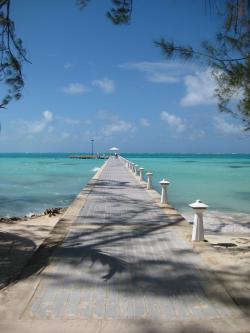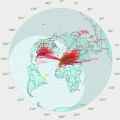jks
About
- Username
- jks
- Joined
- Visits
- 36,254
- Last Active
- Roles
- Member, Administrator, Moderator
- Points
- 639
Reactions
-
Update Problem [fixed in v1.332]
-
Connecting Kiwi via WiFi
Update to v1.311, then login to the Beagle as root and do the following:
Now look for these messages in the log where "eth0" is hopefully replaced with your USB WiFi's identifier. The last two lines should have the local network address of the WiFi interface. Connecting to the admin page should now work.cdp mst cdk nano admin.json [or other text editor of your choice] [go to end of file and replace "options":0 with "options":1] [save changes] cdp ku [wait 1 minute] msSep 12 00:55:28 www kiwid[1551]: 00:00:32.181 ... getifaddrs: IF lo fam=17 flags=0x10049 UP RUNNING Sep 12 00:55:28 www kiwid[1551]: 00:00:32.188 ... getifaddrs: IF eth0 fam=17 flags=0x19043 UP RUNNING Sep 12 00:55:28 www kiwid[1551]: 00:00:32.191 ... getifaddrs: IF usb0 fam=17 flags=0x1003 UP Sep 12 00:55:28 www kiwid[1551]: 00:00:32.193 ... getifaddrs: IF lo fam=2 flags=0x10049 UP RUNNING Sep 12 00:55:28 www kiwid[1551]: 00:00:32.193 ... getifaddrs: IF eth0 fam=2 flags=0x19043 UP RUNNING Sep 12 00:55:28 www kiwid[1551]: 00:00:32.193 ... getifaddrs: CHECK eth0 fam=2 Sep 12 00:55:28 www kiwid[1551]: 00:00:32.194 ... DDNS: IF IPv4 0xc0a80167 /24 0xffffff00 eth0 Sep 12 00:55:28 www kiwid[1551]: 00:00:32.194 ... getifaddrs: IF usb0 fam=2 flags=0x1003 UP Sep 12 00:55:28 www kiwid[1551]: 00:00:32.194 ... getifaddrs: IF lo fam=10 flags=0x10049 UP RUNNING Sep 12 00:55:28 www kiwid[1551]: 00:00:32.194 ... getifaddrs: IF eth0 fam=10 flags=0x19043 UP RUNNING Sep 12 00:55:28 www kiwid[1551]: 00:00:32.194 ... getifaddrs: CHECK eth0 fam=10 Sep 12 00:55:28 www kiwid[1551]: 00:00:32.194 ... DDNS: IF IPv6 LINK-LOCAL /64 eth0 Sep 12 00:55:28 www kiwid[1551]: 00:00:32.194 ... DDNS: private IPv4 <192.168.1.103> 0xc0a80167 /24 0xffffff00 eth0 Sep 12 00:55:28 www kiwid[1551]: 00:00:32.194 ... DDNS: private IPv6 LINK-LOCAL /64 ff:ff:ff:ff:ff:ff:ff:ff:00:00:00:00:00:00:00:00: eth0 -
Locked out by using the Admin page?
All there is at the moment is the user/admin guide ("operating information", which grew from the "quick start" page) http://kiwisdr.com/quickstart/index.html Even that is unfortunately incomplete (some commands and options are not documented).
There is a architecture design document, but it is very old and somewhat out-of-date: https://www.dropbox.com/s/i1bjyp1acghnc16/KiwiSDR.design.review.pdf?dl=1
There is no "tour" guide of the software/files. That was always a low-priority task. Sadly we don't have many software contributors, although the ones we do have are doing some absolutely stellar work. And of course our many forum contributors are providing a great service to our user base. -
Locked out by using the Admin page?
The only way you will get the "Sorry, this KiwiSDR server is being used for development right now" message is if on the "control" tab of the admin page you have set the "enable user connections?" switch to "no" AND you have left the "reason if disabled" field blank. Set the switch back to "yes" and you should be fine (no restart is required).
Above, the "ku" ("kiwi up") command was mentioned. But I think everyone meant to say "up" ("update") which is the command to manually update the software and rebuild from scratch. This is essentially the manual version of what the automatic software update does. See the link in Stu's post.
The "up" command cannot be used from the console tab of the admin page. That's why you get the error message (there is a different procedure needed in this case). The "cdp" "up" command sequence can only ever be used from a root ssh/PuTTY login to the Beagle. But that is not the solution that is needed here. -
S meter extension - prevent clearing? [fixed in v1.318]
-
S meter extension - prevent clearing? [fixed in v1.318]
-
KYOTO News FAX 16969.1 kHz 23:00utc
In v1.318/319 there is support for multiple LPM settings. And the preset for JJC/JSC now selects 60 LPM and was tested (see below). XSG now replaces BMF. And JFC/JFW/JFX has been added per mt-utility.blogspot.com/2010/02/1800-utc-8658-utc-fax-confirmed-jfx.html (I had a successful reception on 16907.5) The frequency for HSW64 was fixed.
A speculative entry was added for GM-11F Ukraine (see: mt-utility.blogspot.com/2009/12/so-who-is-gm-11f.html)
That post is 10 years old. Since 1430Z is 0230 am for me could someone try listening at that time and see if GM-11F is still on the air?
-
S meter extension - prevent clearing? [fixed in v1.318]
-
S meter extension - prevent clearing? [fixed in v1.318]
-
S meter extension - prevent clearing? [fixed in v1.318]
The phasing feature seems to work okay the first time (after extension start up) but after that it only works occasionally. So there is more work to be done.v1.319 August 28, 2019 Fixed bug in audio FFT mode. If you visited a new Kiwi for which no FFT WF max/min cookie values had ever been stored you'd always get a black waterfall until clicking "Auto Scale" and then reloading the page. FAX extension: Now has a 2k line scroll-back buffer. Added phasing and autostop capabilities. Phasing will automatically align (shift) the image horizontally if the phasing signal at the beginning of the transmission is clear enough. Autostop will stop the image buffer updating if the fax start/stop tones are clear enough. S-meter extension: Now has stop/start and "mark" buttons.









